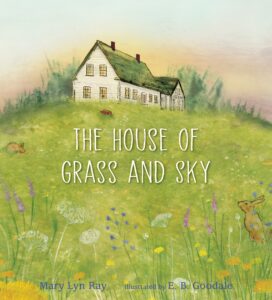By Christina Capecchi
Twenty-Something
Every house, in its own way, is a living thing. It changes as we change. It expands with joy and contracts under duress.
 This strikes me as a Catholic concept. We embrace sacramental living and elevate each home as a “domestic church,” the first place a soul is formed. But it’s a human idea, really. It’s something we sense, deep down, even if we can’t articulate it or sound silly when we try.
This strikes me as a Catholic concept. We embrace sacramental living and elevate each home as a “domestic church,” the first place a soul is formed. But it’s a human idea, really. It’s something we sense, deep down, even if we can’t articulate it or sound silly when we try.
We enter a home and breathe in its history. We know it is more than brick and stone, greater than the sum of its parts. Over time we come to believe the house is participating in our lives, tucking our memories within its walls, sighing with satisfaction, creaking with sorrow. We wonder, if we listen well enough, if we could hear its beating heart.
And eventually we dare to imagine that a house can love you back, offering beauty and security, light and darkness – and ultimately, helping you become who you were meant to be.
That’s what happened to Mary Lyn Ray, 75, who became a writer when she moved into an old farmhouse in South Danbury, N.H. It felt like the house in her favorite childhood book, Tasha Tudor’s “Snow Before Christmas.” Mary Lyn was certain that somewhere, a house like the one in the book waited for her.
Decades passed, and Mary Lyn went about her business. One day, to celebrate her mother’s birthday, she promised her family a picnic at “some wonderful surprise place” without having one in mind.
As Mary Lyn prepared their food, a friend of a friend visited and mentioned a pretty spot: a boarded up white farmhouse facing a mountain half a mile down a back road in South Danbury.
When Mary Lyn found it, there was a flash of recognition. “It looked just like the Tasha Tudor picture I had been carrying with me,” she told me.
The house had been sitting empty for 40 years, ensnared in estate issues. So Mary Lyn waited, just as the house had waited for her. In 1984, five years later, she finally bought it, working with her father to make it livable while honoring what the builder had understood nearly a century and a half ago.
Never having married, Mary Lyn would live there alone. As she settled in, she found a drawer built into the wall. Underneath, written in pencil, were two initials: ML.
Her initials.
“It gave me shivers,” she said. “It seemed the house had known my name before I came. I felt as if maybe I had been expected.”
Her education began.
“The farm taught me how to be open to story,” she said. “It gave me the space, and as I began to listen and look and be present, it taught me to see how story happens and where my story may wait.”
What poured out, in the ensuing decades, was nearly 50 acclaimed children’s books, including “Pumpkins,” “Go to Sleep, Little Farm” and “Christmas Farm.”
Her new release, “The House of Grass and Sky,” tells the story of an old white farmhouse much like hers waiting for a family. The book is an homage to Mary Lyn’s beloved home, enriched by E.B Goodale’s watercolor collages. You can feel the grass.
When a new family finally buys The House of Grass and Sky, they respect its history: “They listen to what it’s listened to for many years. They take time to notice and to wonder.”
It is a beautiful book for all ages, well timed for a wild housing market, as Americans pack up and return to their hometowns in droves, as parents reconsider what kind of childhood they want for their kids and empty houses rejoice.
Christina Capecchi is a freelance writer from Inver Grove Heights, Minn.
